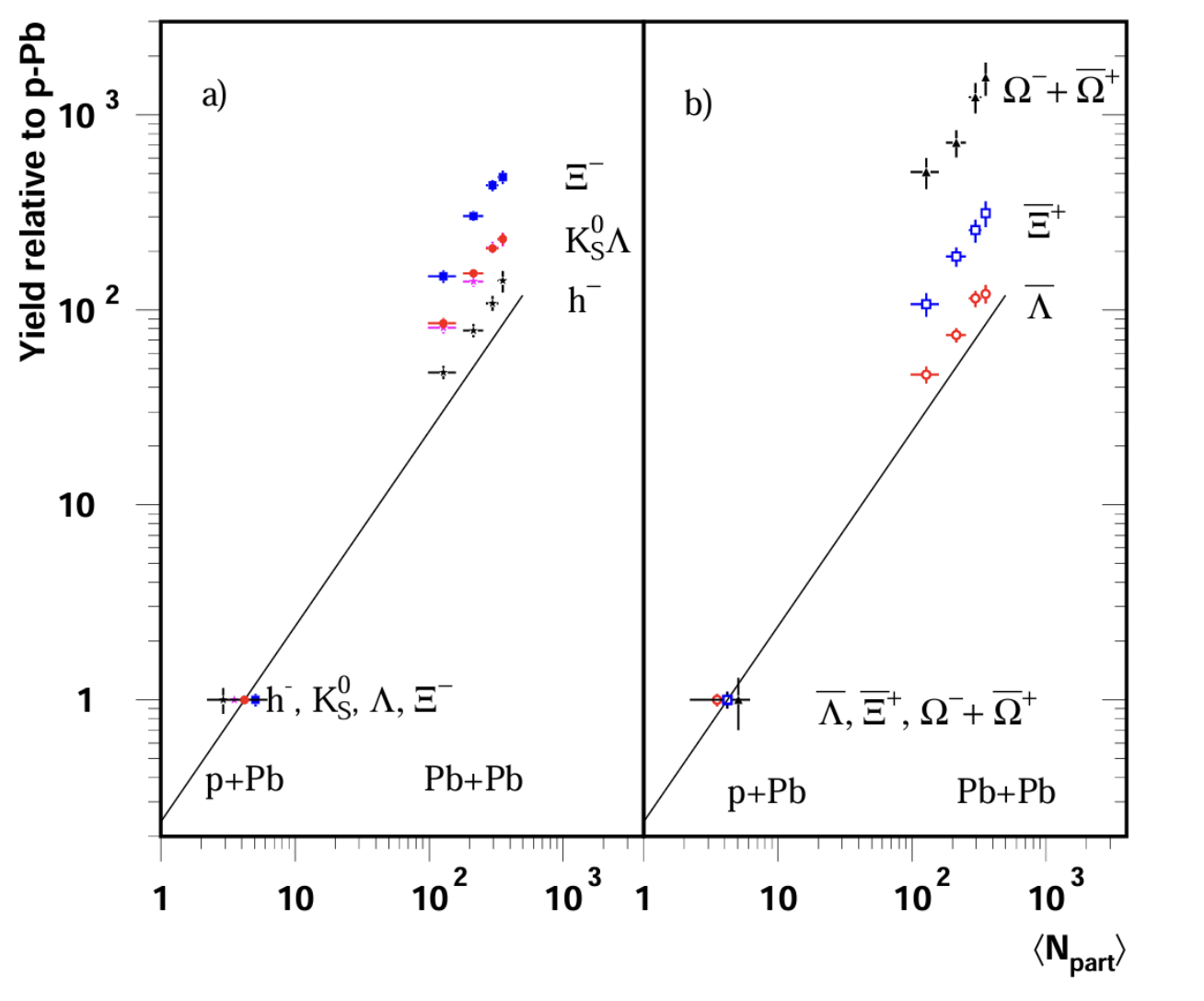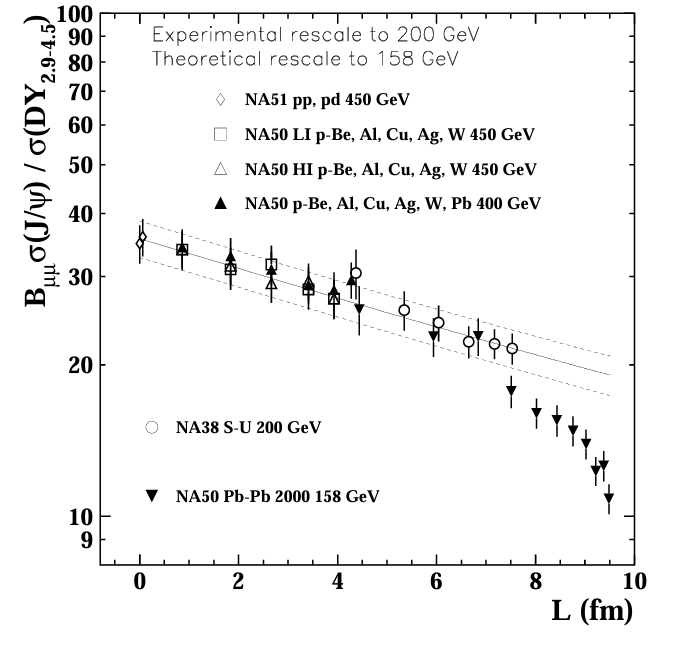Unveiling the Early Universe: The Historical Journey to Discovering the Quark-Gluon Plasma

One of the most fascinating characteristics of particles carrying colour charge, such as quarks and gluons, is their inability to exist as free entities in nature. They are indeed perpetually confined within colour-neutral composite particles known as hadrons. This phenomenon, called colour confinement, arises from the unique properties of the strong interaction, mediated by gluons. As quarks or gluons attempt to separate, the force between them does not diminish, but instead becomes stronger with increasing distance. This counterintuitive behaviour prevents the isolation of individual quarks and ensures their perpetual binding within hadrons. Conversely, when quarks and gluons are in close proximity, the strength of their interactions diminishes significantly, allowing them to behave as though they are nearly free particles. This effect, known as asymptotic freedom, is a striking feature of quantum chromodynamics (QCD), the theory describing the strong interaction.
Building on this understanding, in the late 1970s, theorists proposed that under extreme conditions of high energy and density, quarks and gluons could be compressed to such an extent that the strong interaction between them would effectively weaken, allowing them to exist in a nearly unbound state. This novel state of the matter, known as the quark-gluon plasma (QGP), permits the existence of free colour charges. Such extreme conditions, characterized by unimaginable temperatures and energy densities, are thought to be present microseconds after the Big Bang. Consequently, studying the QGP offers a unique opportunity to explore the early universe, probe the fundamental interactions that shaped its evolution, and rigorously test QCD predictions.
In high-energy physics experiments, particle accelerators can recreate the extreme conditions necessary to study the phase transition between hadronic and partonic matter. However, collisions involving light particles, such as electrons, positrons, or protons, conducted since the early 1960s, lack the energy density required to form a QGP. Instead, the conditions suitable for this transition can be achieved through collisions of heavy ions. Research efforts to generate QGP through heavy-ion collisions were initiated at CERN in 1986 using the Super Proton Synchrotron (SPS), a 6.9 km circumference particle accelerator originally designed to accelerate protons up to 450 GeV. Over the years, the SPS has been repurposed and upgraded for diverse applications, including its pivotal role in heavy-ion physics. In these experiments, lead ions were accelerated to an energy of 158 GeV/nucleon (equivalent to 400 GeV/proton) and collided with fixed targets, usually also made of Pb. These collisions produced temperatures exceeding 100,000 times that of the Sun’s core and energy densities twenty times greater than those found in ordinary nuclear matter, reaching levels never before achieved in controlled experimental environments. The SPS heavy-ions program involved seven dedicated experiments, each designed to probe distinct properties of the collision dynamics, particle production, and signatures indicative of QGP formation.
In particular, a major focus of the SPS experiments was the production of strange hadrons, as kaons, hyperons, and multi-strange anti-baryons. Since the 1980s, the enhancement of strange hadron production has been proposed as a key indicator of QGP formation, as strange quarks are relatively rare in ordinary nuclear collisions due to their higher mass. In a hot QGP environment, however, strange quarks are expected to be thermally produced in high abundance. This phenomenon, known as “strangeness enhancement”, was observed, in particular by the experiments WA97 and NA57 [1], which measured a significant increase in the production of strange and multi-strange baryons in lead-lead (Pb+Pb) collisions compared to proton-induced collisions, as shown in Fig. 1. Pb–Pb yields steadily increase with the number of participating nucleons in the collision, as a higher number of participants results in a larger overlap between the colliding nuclei, leading to higher energy densities and more favourable conditions for QGP formation. Moreover, the enhancement is more pronounced for multistrange particles and reaches one order of magnitude in the case of the Ω baryon (triple strange quark content). These elevated yields of strange baryons, far exceeding expected levels, pointed to a unique, thermally driven mechanism within the QGP, where extreme energy densities facilitate the prolific production of strange quarks.

Figure 1: Yields, expressed in units of yields observed in p–Pb collisions, as a function of the number of participants for a) h−, K0S, Λ, and Ξ−; b) Λ, Ξ+, and Ω− + Ω+. The solid line represents a function proportional to the number of participants ⟨Npart⟩ [1].
Another critical signature of QGP formation investigated at the SPS is the suppression of J/Ψ and Ψ(2S) mesons, bound states of charm and anti-charm quarks. In the extreme temperature and density conditions of the QGP, a phenomenon known as colour screening weakens the attractive force between charm and anti-charm quarks, preventing them from binding together to form J/Ψ mesons. The deconfined medium of free-moving quarks and gluons interferes with the formation of these mesons, leading to a significant reduction in J/Ψ production among the collision products. The J/Ψ suppression was observed for the first time by the NA50 experiment [2,3], as shown in Fig. 2. From the plot, a smooth decrease in J/Ψ production as a function of the average length L of nuclear matter traversed by the cc̅ state is clearly visible. The variable L is closely related to the number of nucleons participating in the collision, and thus to the centrality of the collision, with larger L values corresponding to more central collisions. This smooth decrease is attributed to standard nuclear absorption, which scales with the number of nucleons involved in the collision and is represented in the figure by a continuous line. Notably, the points for Pb-Pb collisions at small L, corresponding to peripheral collisions, aligns well with the trend expected from standard nuclear absorption. However, the Pb-Pb points at larger L, corresponding to more central collisions, lies significantly below this trend, indicating additional suppression, likely due to the formation of QGP. This additional suppression increases with centrality, reflecting the higher density and temperature of the medium created in more central collisions [2].

Figure 2: J/Ψ/Drell-Yan cross-sections ratio as a function of the average length L of nuclear matter traversed by the cc state, for several collision systems, compared to the normal nuclear absorption pattern [3].
These measurements, along with several others, such as the increased yield of direct photons, attributed to thermal production in the medium [4], and the hadron spectra, which were consistent with a system in thermal equilibrium at a temperature near or above the critical deconfinement temperature [5], provided compelling evidence for the existence of a novel state of matter. After six years of experiments and analysis, the discovery of the QGP was finally announced in 2000 by the CERN Director General Luciano Maiani [6].
Despite this groundbreaking discovery, critical points remained: did it signify a fully realized quark-gluon plasma or merely an intermediate precursor phase? The pursuit of answers to this and other questions about the properties of this exotic state of matter became the driving force behind a new generation of heavy-ion experiments at the Relativistic Heavy-Ion Collider (RHIC) at Brookhaven National Laboratory and the Large Hadron Collider (LHC) at CERN. Unlike the fixed-target setup of the SPS, these advanced facilities employed circular colliders, enabling collisions at significantly higher energies. These conditions resulted in higher initial temperatures, unprecedented energy densities, and extended lifetimes of the medium, enabling a more detailed characterization of QGP. This deeper exploration has allowed for a more comprehensive characterization of the QGP, advancing our understanding of this extraordinary state of matter. Measurements from RHIC and LHC not only corroborated the earlier findings from SPS but also significantly expanded our understanding of the QGP by exploring new observables. These studies provided detailed insights into the collective motion of partons [7, 8] and the mechanisms of energy loss during their interactions with the medium formed in heavy-ion collisions [9, 10,11, 12]. Intriguingly, they revealed that partons within the QGP are not free, as initially expected, but instead strongly interact with one another. This strong coupling among partons suggests that the QGP behaves more like a near-perfect fluid with extremely low viscosity, rather than a weakly interacting gas, challenging our initial understanding of this state of matter.
Recently, new results from proton-proton and proton-nucleus collisions have further enriched the puzzle of heavy-ion collisions. Despite the smaller system sizes, the detected products of these events exhibit many similarities to those detected in the aftermath of heavy-ion collisions, raising the question whether droplets of QGP can be formed in these collision systems too [13, 14]. However, not all the traditional signatures of the creation of the QGP have been detected in these small collision systems. This possible contradiction remains a puzzle requiring further investigation that the current and future heavy-ion experiments aim to unravel.
References
- E. Andersen and Al., “Study of strangeness enhancement in Pb-Pb collisions at the CERN SPS.”
- NA50 Collaboration, “J/psi suppression in Pb-Pb collisions at CERN SPS,” 2001. https://arxiv.org/abs/hep-ex/0101052.
- NA50 Collaboration, “A new measurement of j/ψsuppression in pb-pb collisions at 158 gev per nucleo,” The European Physical Journal C 3 no. 1, (2005) 335–345. https://doi.org/10.1140/epjc/s2004-02107-9.
- WA98 Collaboration, “Direct photons in WA98,” Nuclear Physics A 698 (02, 2002) 135c–142c.
- NA49 Collaboration, “Hadron production in nuclear collisions from the NA49 experiment at 158 GeV/c · A,” Nuclear Physics A 661 no. 1, (1999) 45–54. https://www.sciencedirect.com/science/article/pii/S0375947499850076.
- U. W. Heinz and M. Jacob, “Evidence for a new state of matter: An Assessment of the results from the CERN lead beam program,” arXiv:nucl-th/0002042.
- STAR Collaboration, “Particle-type dependence of azimuthal anisotropy and nuclear modification of particle production in Au + Au collisions at √sNN = 200 GeV,” Phys. Rev. Lett. 92 (Feb, 2004) 052302. https://link.aps.org/doi/10.1103/PhysRevLett.92.052302.
- ALICE Collaboration, “Anisotropic flow of identified particles in Pb-Pb collisions at √sNN = 5.02 TeV,” Journal of High Energy Physics 2018 no. 6, (2018). https://doi.org/10.1007/JHEP09(2018)006.
- PHENIX Collaboration, “Suppression pattern of neutral pions at high transverse momentum in Au+Au collisions at √sNN = 200 GeV and constraints on medium transport coefficients,” Phys. Rev. Lett. 101 (2008) 232301, arXiv:0801.4020 [nucl-ex].
- PHENIX Collaboration, “J/ψ production versus centrality, transverse momentum, and rapidity in Au + Au collisions at √sNN = 200 GeV,” Phys. Rev. Lett. 98 (Jun, 2007) 232301. https://link.aps.org/doi/10.1103/PhysRevLett.98.232301.
- CMS Collaboration, “Charged-particle nuclear modification factors in PbPb and pPb collisions at √sNN = 5.02 TeV,” Journal of High Energy Physics 2017 (2017) 39. https://doi.org/10.1007/JHEP04(2017)039.
- CMS Collaboration, “Nuclear modification factor of D0 mesons in PbPb collisions at √sNN = 5.02 TeV,” Physics Letters B 782 (2018) 474–496. https://www.sciencedirect.com/science/article/pii/S0370269318304386.
- ALICE Collaboration, “Enhanced production of multi-strange hadrons in high-multiplicity proton–proton collisions,” Nature Physics 13 no. 535-539, (2017). https://doi.org/10.1038/nphys4111.
- CMS Collaboration, “Observation of long-range, near-side angular correlations in proton-proton collisions at the LHC,” Journal of High Energy Physics 2010 no. 91, (2010). https://doi.org/10.1007/JHEP09(2010)091.
